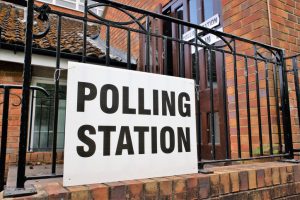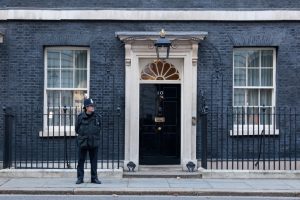Greg Campbell assesses the impact of the May 2023 local elections, held in 230 councils in England, and draws out key lessons and questions.
When a party leadership projects a number of election losses, they believe the reality will be appreciably less bad so they can claim a ‘victory’. Greg Hands, Conservative Chair, claimed to expect the loss of 1,000 seats – presumably anticipating perhaps 500-700 losses. The actual loss of 1,063 seats must be interpreted as especially damaging.
Labour weren’t drawn on predictions, but analysts anticipated a gain of roughly 700 seats. So gaining 537 seats was reasonable but not spectacular. Moreover Labour’s percentage of the vote, at 35%, was no better than the 2022 local elections, and appreciably lower than their recent opinion polling – accepting that elections were not taking place in London, Scotland, Wales and other areas.
For the Liberal Democrats and the Greens, the results were spectacular, and in the Greens’ case, doubled their representation in the seats being contested.
Meanwhile, there was little sign of the nationalist populist right: the performance of the Reform Party was insignificant.
Council control
However, when one looks at the effects on council control, one gains a clearer sense of what happened at local level, described as the ‘increased efficiency of Labour and Lib Dem votes’. The Conservatives lost control of 60% of their councils (81 down to 33); while Labour increased from 49 to 71 councils; Lib Dems moved from 17 to 29; and the Greens picked up their first council majority in Mid Suffolk. Also significant is the increase in the number of councils moving to no overall control, from 80 to 92.
Locally, there were other striking results: Labour gaining Medway for the first time, and winning Stoke in the heart of the former ‘Red Wall’, for instance. Labour meanwhile losing control of Slough. The Lib Dems taking Windsor & Maidenhead and Stratford upon Avon.
Bracknell Forest – Conservative held for 26 years – was especially striking:
| Bracknell Forest Council seats won | Conservative | Labour | Liberal Democrat | Green |
| 2019 | 37 | 4 | 1 | 0 |
| 2022 | 10 | 22 | 7 | 2 |
This wasn’t accidental. Labour and Liberal Democrats did not stand against each other in any wards, and Liberal Democrats and Greens also didn’t oppose each other. National party leaders may have been harrumphing, and at local level denials have been made, but it’s clear a ‘progressive [or anti-Conservative] alliance’ was operating.
In numerous other councils, even without alliances, it’s evident that tactical voting against the Tories was widespread, with voters deciding which other party was best placed to win. This is a continuation of what we have seen in parliamentary by-elections since 2021: Chesham & Amersham, Old Bexley & Sidcup, North Shropshire, Wakefield, Tiverton & Honiton. While the picture will undoubtedly change between now and the General Election (GE), tactical voting – encouraged by cross-party campaign Compass and others – is likely to continue to figure.

Lower voter turnout
Local elections are not merely about national politics. Some local contests were directly impacted by the performance of their previous council administrations. In addition, council elections turnout is invariably lower than parliamentary elections. This year too, there appeared clear signs of regular Conservative voters staying at home. Nonetheless, trends from these elections could well resound at the GE.
The new voter ID requirements had some impact, with around 9,000 voters excluded nationally. That is liable to increase at the GE.
When will the GE take place? The latest is January 2025, but governing parties (which again control election timing since the 2022 repeal of the Fixed Term Parliaments Act) rarely go to the wire. Plus January is suboptimal election timing – the weather being likely to impact campaigning and voter turnout. More likely is either May or October 2024.
Changes ahead
Meanwhile for local government, there will be changes. Nationally Labour now holds more council seats than the Conservatives, for the first time since 2002, and controls the Local Government Association. For individual councils, where nearly 50 have changed hands, new administrations have been formed. In some of those under no overall control, Conservatives may be able to form minority administrations, but in others, control will transfer, to minority or sometimes coalition administrations. This will lead to considerable policy and practice shifts on the ground.
Nationally the parties are increasingly in pre-election mode. If the GE potentially takes place in under 12 months, received wisdom is that it takes six months (or more) for material policy and practice changes to be reflected in voters’ consciousness. Which leaves little time for significant shifts.
Rishi Sunak has set out five big pledges, on inflation, economic growth, the national debt, NHS waiting lists, and stopping small boats.
Kier Starmer has also set out five missions, on economic growth, clean energy, strengthening the NHS, reducing crime and making streets safer, and reforming childcare and education.

The material difference between these, however, is that Sunak, with more specific pledges, needs to be seen to deliver the changes well ahead of the GE. In Labour’s case, the missions are expected to underlie the party’s election manifesto.
Based on this year’s election results, Labour is unlikely to be able to form a majority government. Moreover, one typically sees a closing of the gap between opposition and government as one gets closer to an election. It could still be that the Tories will regain some of their 2019 strength, even though their path back to power has been described as ‘narrow’.
Of course, many current opinion polls suggest a potential Labour overall majority – given that broadly Labour needs a 12% lead nationally for a majority. Labour’s apparent current strength in London, and the current difficulties of the Scottish National Party and Plaid Cymru, may work to its advantage.
Nonetheless, as matters presently stand, either a Labour minority administration with a ‘confidence and supply’ arrangement, or a Labour-led coalition, are distinct possibilities. This leads to questions about the basis for such a deal. Notwithstanding Starmer’s recent disavowal of previous statements on the need to look at the fairness (or lack of it) of the present voting system, the prospect of proportional representation may resurface at some point.
Greg Campbell is a Partner at Campbell Tickell. To discuss this article further feel free to contact Greg Campbell on: greg.campbell@campbelltickell.com or call +44(0)20 8830 6777
| Campbell Tickell is an established multi-disciplinary management and recruitment consultancy, operating across the UK and Ireland, focusing on the housing, social care, local government, sport, leisure, charity and voluntary sectors. We are a values-based business and firmly place the positioning of our support and challenge on helping organisations to attain change that is well thought through, planned and sustainable. At CT, we want to help organisations create the landscape within which we ourselves would like to exist: fair, inclusive, diverse, engaged and transparent. We build from our values in how we approach all our work as a practice.
Find out more about CT’s Services. |



